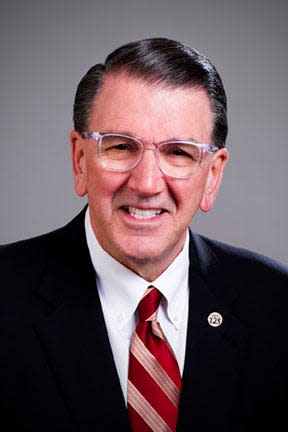WT President Wendler writes 4th in series on regional universities
Fourth in a series on strengths in regional universities.
The nature of university students is changing. According to the Education Data Initiative, nearly 16 million undergraduate students are enrolled in college as of 2020. That represents a 4.3% decline over the previous year. Over 60% of the students are enrolled full-time. About 63% of the high school graduates go on to post-secondary study. The forces that led to this decline are complex. They are not the subject of this reflection. This accelerating decline in the number of students who pursue a college education will change the faces of higher education. Three out of four college students at all educational levels attend public institutions. Regional institutions account for about half of the enrollment in a state like Texas. Majors such as business, health professions, social sciences, history, psychology and biology account for nearly half of the undergraduates enrolled.
The pool of traditionally educated high school students is shrinking, according to Inside Higher Ed. Increasingly, college attendance comes from a much more diversified pool of candidates, with rapidly growing proportions of Hispanic students as one example. Currently, about two-thirds of college students are aged 24 years and under. New America reports that the number will continue to shrink, and nontraditional students will grow. As a regional serving institution, West Texas A&M University now has an average student age of over 26. According to The Atlantic, online programs, the need to work and study simultaneously, the potential for promotion degrees to advance in the workforce and several other factors are pushing the age of college students up. The days of cramming eight people into a phone booth (there are none) with raccoon coats and propeller beanies are long gone.

For WT to best serve the Texas Panhandle, we need to broaden our view of who we see as prospective students. Many students will continue to be provided to us through public high schools. In addition, the U.S. Department of Education reports 88% of students either start at a community college or enroll in dual enrollment courses and bring those experiences into the university. International student populations are important and recovering from the pandemic and the limitations it placed on international travel. Homeschool students and students who experience high school online are increasing in number. Likewise, faith-affiliated and secular students from private high schools will continue to grow in number.
The variety and diversity of experience that comes from nontraditionally aged students, homeschooled students (according to The National Center for Education Statistics, makeup nearly 4% of high school graduates) and private school students all contribute to the educational matrix and increase the quality and variety of educational experiences for all students. For example, each homeschooled student experiences a combination of family life, digital resources used as instructional support and other unique factors that lead to a diversity that enriches the educational experience for all. In addition, it suggests that homeschooled students perform at least as well as those educated in a traditional public school setting. Personalized instruction, individualized learning plans and flexible schedules help homeschool students prepare for the freedom associated with college life.
Students from private, faith-based schools tend to have broad, solid academic experiences and rigorous courses. Critical thinking, ethics and values coupled with the basics in traditional subjects can provide a strong understanding for graduates of private high schools. The Nations Report Card shows private school graduates perform as well or better than public school graduates in college. There is a great variety in the performance of students who have graduated from faith-based high schools in college, just as there is a wide variety in the performance of public school graduates depending on their high school experiences.
More frequently, students graduate from all school settings with widely divergent numbers of dual credit courses. Early studies indicate that these students perform well in college. College preparedness, academic confidence, a reduced course load while enrolled and cost savings all provide a sound basis for continued educational experiences in college.
WT is serving our region and beyond. We must sustain enrollment that allows us to offer quality experiences to students at a reasonable cost. To do this effectively, we need to pay attention to marketplace varieties in homeschool graduates, nontraditional students, students who have earned dual credits while enrolled in high school and students who have attended private high schools. We will not be narrow-minded as students arrive at WT based on the learning environment from which they come. Instead, we will be performance-minded, take one student at a time, assess the student’s ability to perform well at a university and remain committed to meeting them face-toface to provide an excellent educational experience.
This posture will create strength through diversity in how we meet the needs and aspirations of all students who choose to study at West Texas A&M University.
Walter V. Wendler is President of West Texas A&M University. His weekly columns, with hyperlinks, are available at https://walterwendler.com/.
This article originally appeared on Amarillo Globe-News: Wendler commentary: Distinctive college preparation
